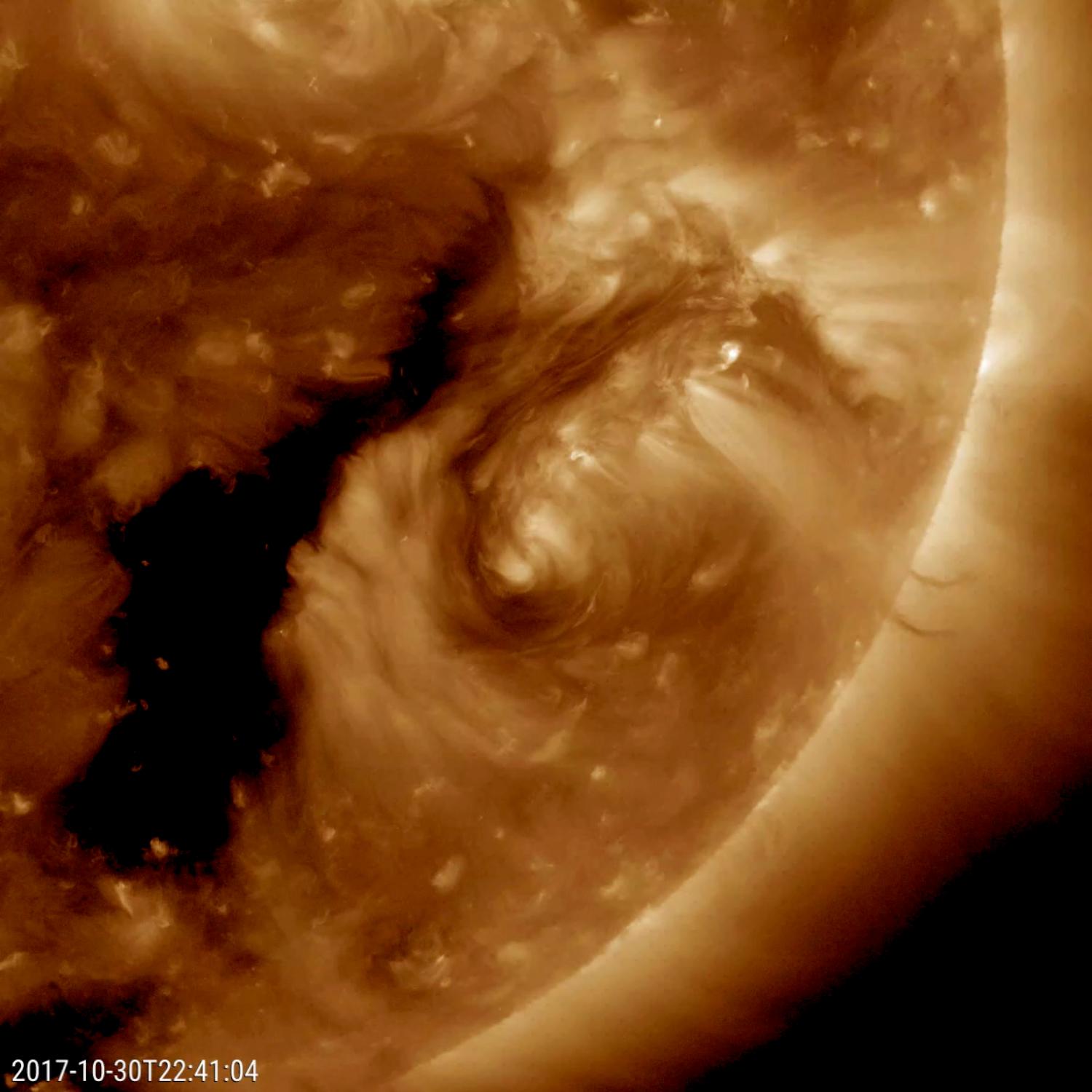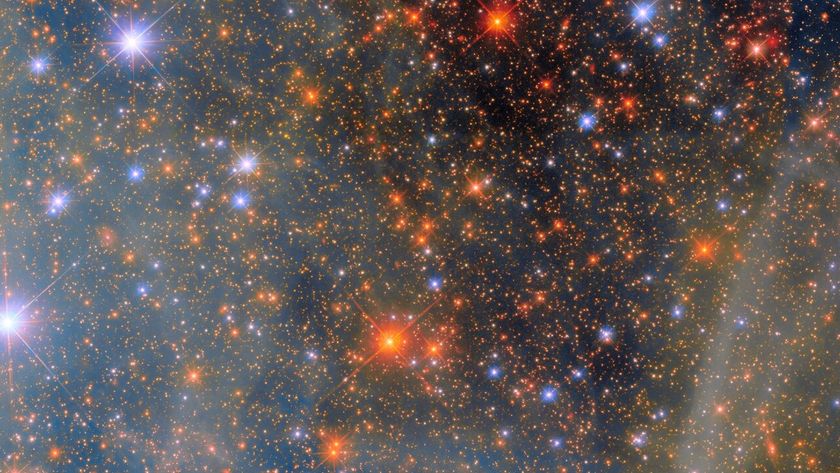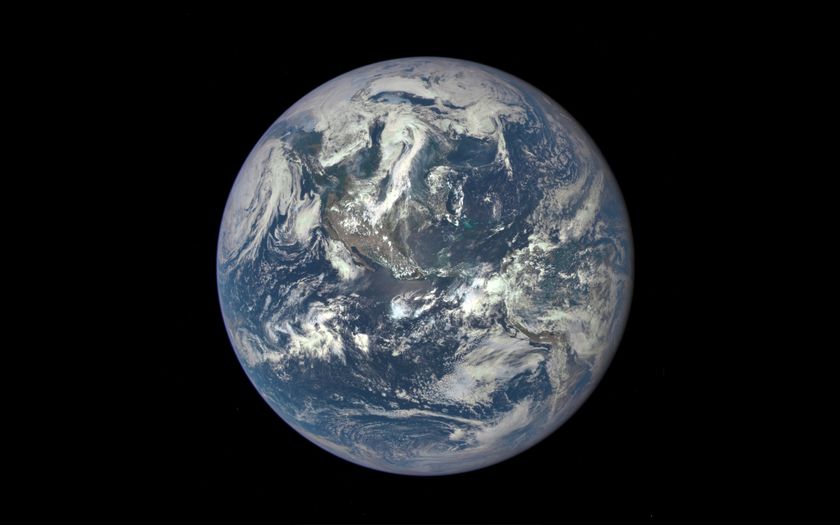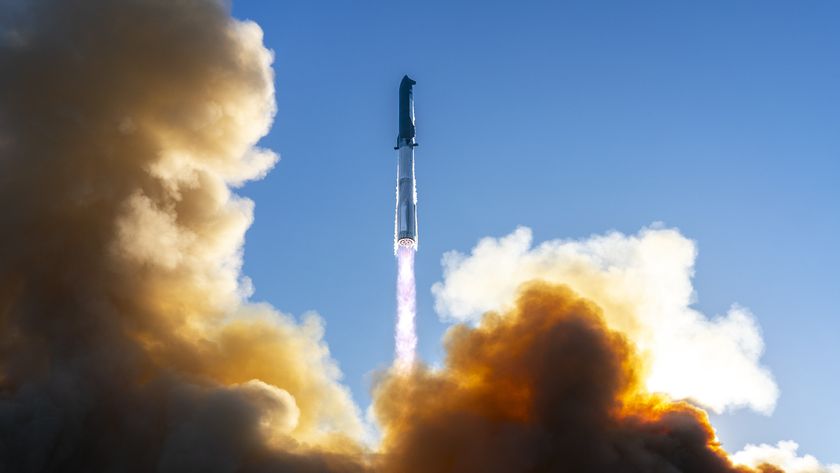NASA Spots a Weird (and Rare) Circular Sight on the Sun

A NASA spacecraft watching the sun has captured a rare view of a true space oddity: something scientists call an "encircling filament" near a "hole" in Earth's parent star.
The filament, which was photographed by NASA's Solar Dynamics Observatory (SDO) between Oct. 29 and Oct. 31, appears as a tendril of dark material surrounding an active region on the sun's surface.
"Only a handful of times before have we seen one shaped like a circle," NASA officials wrote in an image description. "The black area to the left of the brighter active region is a coronal hole, a magnetically open region of the sun." [The Sun in HD: Amazing Photos by SDO]
The encircling filament can be seen in the center of the SDO image, which NASA released yesterday (Nov. 8). The image shows the sun as it appeared to SDO on Oct. 30 in the extreme ultraviolet wavelength of light.
Solar filaments are vast clouds of charged particles that hover over the sun's surface and are tethered in place by invisible magnetic fields. Normally, these filaments appear as elongated, ropy strands across the star's surface, so the circular formation spotted by SDO caught scientists' attention.
"While it may have no scientific value, it is noteworthy because of its rarity," NASA officials wrote in the same statement.
NASA's $850 million Solar Dynamics Observatory launched in 2010. It stares unblinkingly at the sun to record solar weather across many wavelengths and thus help scientists study and track solar weather events.
Get the Space.com Newsletter
Breaking space news, the latest updates on rocket launches, skywatching events and more!
Email Tariq Malik at tmalik@space.com or follow him @tariqjmalik and Google+. Follow us @Spacedotcom, Facebook and Google+. Original article on Space.com.
Join our Space Forums to keep talking space on the latest missions, night sky and more! And if you have a news tip, correction or comment, let us know at: community@space.com.

Tariq is the Editor-in-Chief of Space.com and joined the team in 2001, first as an intern and staff writer, and later as an editor. He covers human spaceflight, exploration and space science, as well as skywatching and entertainment. He became Space.com's Managing Editor in 2009 and Editor-in-Chief in 2019. Before joining Space.com, Tariq was a staff reporter for The Los Angeles Times covering education and city beats in La Habra, Fullerton and Huntington Beach. In October 2022, Tariq received the Harry Kolcum Award for excellence in space reporting from the National Space Club Florida Committee. He is also an Eagle Scout (yes, he has the Space Exploration merit badge) and went to Space Camp four times as a kid and a fifth time as an adult. He has journalism degrees from the University of Southern California and New York University. You can find Tariq at Space.com and as the co-host to the This Week In Space podcast with space historian Rod Pyle on the TWiT network. To see his latest project, you can follow Tariq on Twitter @tariqjmalik.











